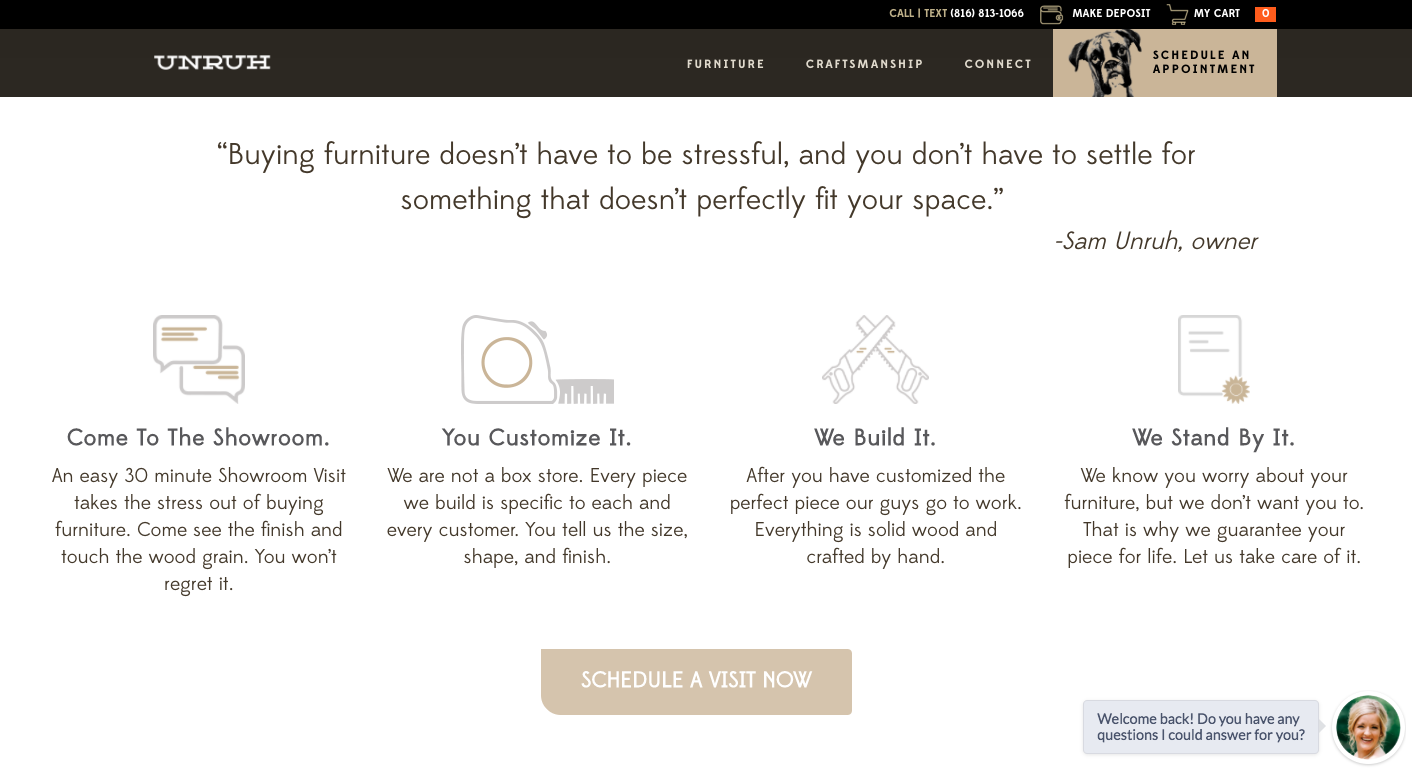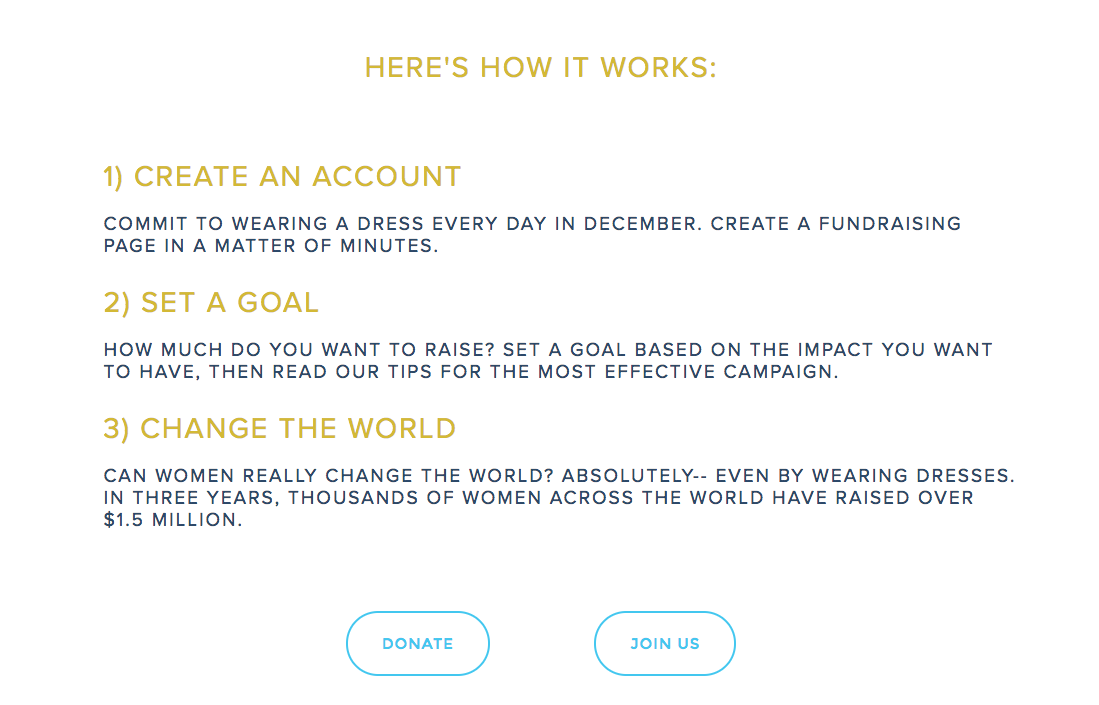
Nobody likes slow sales. But it’s no big mystery why so many businesses struggle with it.
When you ask prospective customers to buy, you’re asking for more than a purchase. You’re asking for a commitment. And like any commitment, it comes with risk. There’s something that can be lost — money, certainly, but in some cases, time, reputation, or a chance for a good experience.
So now when you think about motivating people to buy, here’s what I want you to picture:
Your prospective customer is standing on the edge of a deep, rushing stream.
They know they want what’s on the other side — your product or your service.
To get it, they know they’ve got to cross this dangerous stream. But they’re acutely aware of the risks in doing so. What happens if I fall in? Is that a deadly waterfall downstream that I could go over? Those are the kinds of questions our customers subconsciously ponder as they hover their little cursor over the “buy now” button.
In order to ease people’s concerns, we need to lay down stones in the creek and show them the path across. When we point out this path, they’ll feel much more comfortable getting across and doing business with us.
In other words, we need to give our prospective customers a plan.
The anatomy of an effective plan
A good plan will do one or both of these things:
• It will clarify how somebody can do business with us.
• It can remove the sense of risk somebody might have if they’re considering investing in our products or services.
One simple way to do this is by creating a “process plan.”
A process plan describes the steps a customer needs to take to buy your product or use your product after they buy it. It can also be a mixture of both.
It takes the confusion out of your customer’s journey and shows them easy-to-follow steps.
If you’re not sure how to do this, let me show you a couple of great examples. I’ll also tell you why they work and the results they’ve produced.
Unruh Furniture
Unruh makes custom furniture in a turn-of-the-century church in Kansas City, Missouri.
At Unruh, they understand that the process of buying furniture feels overwhelming. But they found that if they could simply get people to their showroom, they’d be much more likely to buy. So Sam Unruh and his team designed a website that’s geared toward getting people to book showroom appointments.
A big part of it? A four-part plan that defines a clear path customers can take to get high-quality, custom furniture they’ll love.

What We Love About This
• They’ve taken their existing process and broken it down into four easy-to-follow steps.
• They use the word “you” often, so you can picture yourself following the plan.
• They include a fourth step of “We Stand By It,” which isn’t technically a “step” but is a smart way to show that there’s no risk in the purchase.
• They use simple icons to give each step more definition and help draw your eye to the plan.
How It’s Working
We talked with owner Sam Unruh about what happened when he and his team put this plan (and other website changes) in place.
First, it’s shortened the sales process from an average of three months down to a matter of days. As Sam told us, “[Customers] can envision themselves doing what we’re wanting them to do, which is come out and visit us and buy furniture.”
That’s exactly what the plan does. It points to the stones in the creek. Once customers see it, the path across becomes much easier to cross.
It’s also resulted in a huge uptick in conversions. In fact, Unruh has doubled the number of showroom appointments they book each month.
As a result, they had to turn down their online advertising budget. Before these changes, they’d need to spend about $20,000 a month to hit their quota. Now they only need to spend $12,000.
Nothing changed about their product. All they did was give their customers a clear, safe path to follow in order to do business with them.
Dressember.org
At Dressember.org, women raise money to end human trafficking by wearing a dress every day during the month of December.
Blythe Hill started this nonprofit because she felt passionate about the issue of human trafficking but also powerless to do anything about it.
At first, she had a lot of interest in the idea but not a lot of involvement. Blythe found herself fielding a lot of questions about how Dressember worked. She was spending a lot of time on social media and in her inbox just explaining her mission.
As she told us, “It was clear to me that it wasn’t clear to them. It occurred to me that people are interested, but not understanding.”
So she defined a simple plan for women to get involved and gave it prominent real estate on her homepage.

What We Love
• She’s created a clear three-step plan that takes a cool but uncommon concept and makes it easy to understand.
• She uses short sentences that are extremely readable.
• She’s added a “Here’s How It Works” headline that guides people straight toward the plan.
• She includes a final aspirational step of “Change the World,” complete with the social proof of the impact they’ve already made. This helps women see how their involvement will make an impact, too.
How It’s Working
It’s early in their campaign, but already they’ve doubled the number of donations from last year. They’ve got 25% more women participating this year. And — get this — a 500% increase in the number of teams who’ve signed up.
Blythe had a fantastic idea with tons of potential. And once she used a plan to eliminate the confusion about how to get involved, she’s seen a dramatic increase in the impact her nonprofit is making.
—
In both cases, these two organizations have alleviated confusion for people by giving them a map to follow.
What steps do people need to take to do business with you or get involved with your organization? What does it look like to experience your business’ product or service, and how can you break that down into easy-to-follow steps?
Spell out those steps, and it’ll be as though you’ve paved a sidewalk through an overgrown field. And guess what? A lot more people will cross the field.
How to Get Results Like Unruh Furniture and Dressember
The two organizations we featured in this blog post are StoryBrand Alumni. That means they’ve mastered a simple seven-part framework that’s helped them clarify their message and grow their organizations. You can, too! Join us at the next StoryBrand Live Workshop (Jan. 8-10) — but hurry, because the spots are going fast.










